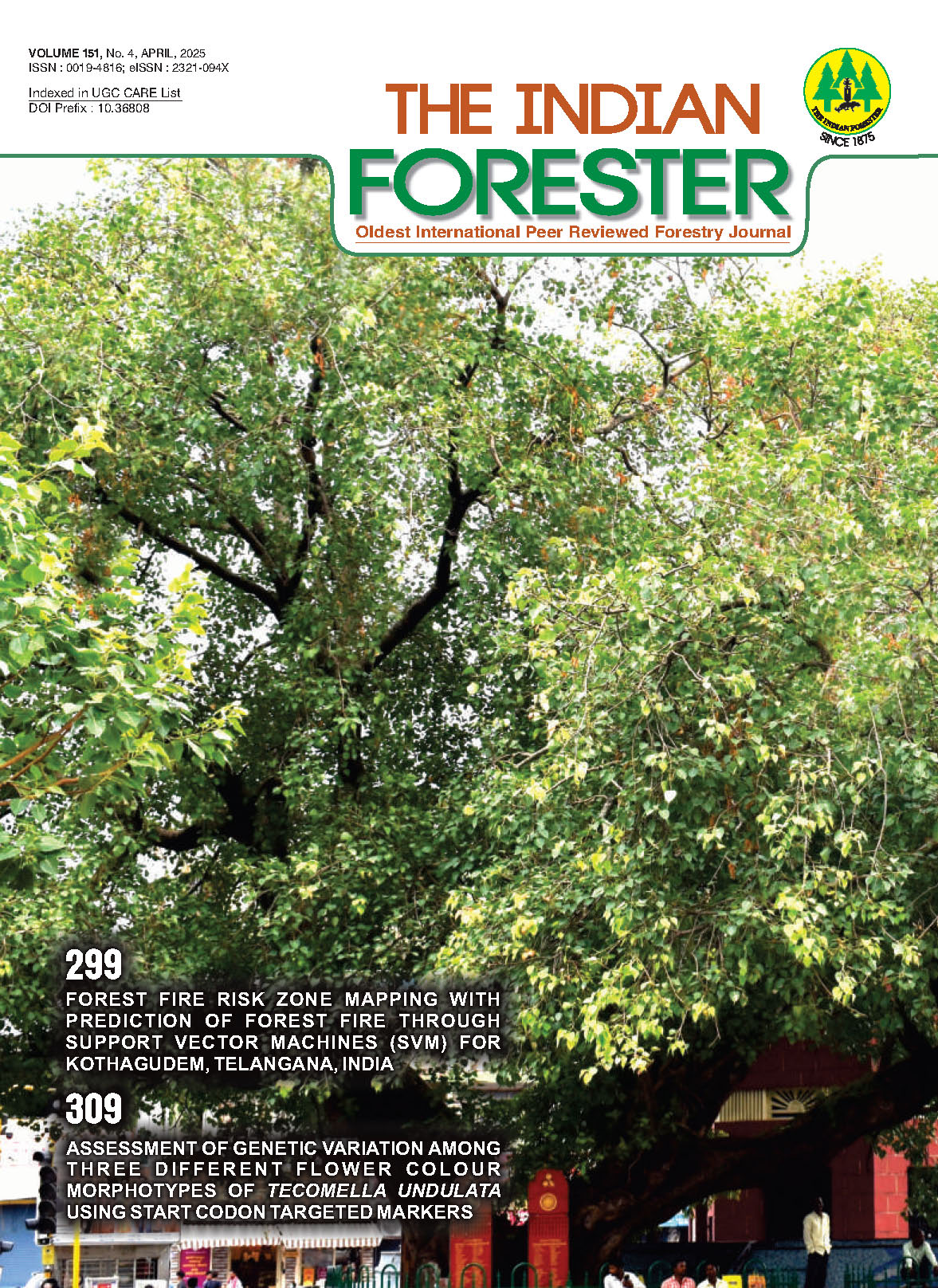Ethnobotanical studies in Loktak Lake, Manipur, India
DOI:
https://doi.org/10.36808/if/2025/v151i4/170061Keywords:
Ramsar site, Wetlands, Nutraceutical, Value addition.Abstract
An attempt has been made to document the plants having food and medicinal values used by the local communities of Loktak Lake, Manipur, India. A survey was made in 2021–2022, which enumerated 28 foods and 31 medicinal plants commonly consumed by the local communities. Further, they are classified as nutraceuticals and modes of use. The study not only highlights them but also draws attention to their value addition and conservation.
References
Das L., Mishra S., Das A., Dimri R. and Kumar S. (2022). Some common flora of temple city of Odisha, India: source for ethnomedicocultural values. Indian Forester, 148(2): 207-212. DOI: https://doi.org/10.36808/if/2022/v148i2/156797
Devi M.H., Singh P.K. and Choudhury M.D. (2014). Income generating plants of Keibul Lamjao National Park, Loktak Lake, Manipur and man-animal conflicts. Pleione, 8(1): 30-36.
Devi R.S., Satapathy K.B. and Kumar S. (2022). Ethnobotanical plants of Phumdi, Loktak Lake, Manipur, India. Asian Pacific Journal of Health Sciences, 9(4): 76-80. DOI: https://doi.org/10.21276/apjhs.2022.9.4.16
Jain A., Roshnibala S., Kanjilal P.B., Singh R.S. and Singh H.B. (2007). Aquatic / semi-aquatic plants used in herbal remedies in the wetlands of Manipur, Northeastern India. Indian Journal of Traditional Knowledge, 6(2): 346-351.
Laishram J. (2021). A study on the bioresources of the Loktak Lake, Manipur (India) for livelihood by the people living in five villages located in and around the lake. Current World Environment, 16(3): 928-941. DOI: https://doi.org/10.12944/CWE.16.3.23
Meitei M.D. and Prasad M.N.V. (2013). Phoomdi- a unique plant biosystem of Loktak lake, Manipur, North-East India: Traditional and ecological knowledge. Plant Biosystem, 1-11.
Roy R. and Majumadar M. (2019). Assessment of water quality trends in Loktak Lake, Manipur, India. Environmental Earth Sciences, 78: 383; DOI:/10.1007/s12665-019-8383-0. DOI: https://doi.org/10.1007/s12665-019-8383-0
Saha M., Roy A.B., Kumar S. and Datta B.K. (2022). Ethnobotanical Diversity of some Wetland Plants of North-East India: Implications for Conservation. Indian Forester, 148(11): 1149-1154. DOI: https://doi.org/10.36808/if/2022/v148i11/158704
Singh S.C. (1996). Medicinal Plants of Manipur. Manipur Association of Science and Society, Manipur, Imphal. 1-238.
Singh S.R. and Singh I.N. (1985). A preliminary ethnobotanical study on wild edible plants in the market of Manipur. Journal of Economic and Taxonomic Botany, 6(3): 699-703.
Downloads
Downloads
Published
How to Cite
Issue
Section
License
Unless otherwise stated, copyright or similar rights in all materials presented on the site, including graphical images, are owned by Indian Forester.





